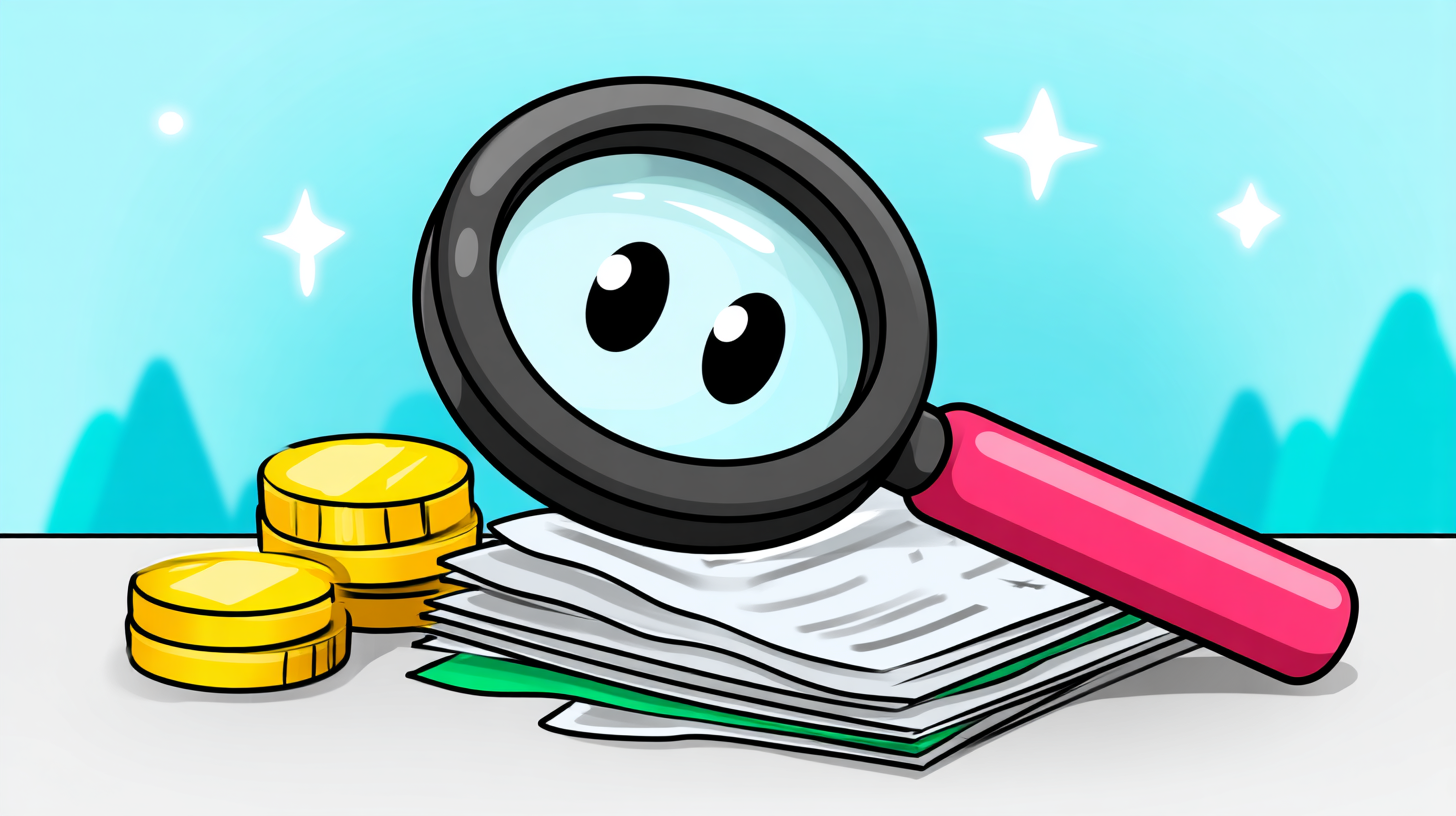Hey everyone, Paul Peery here! Ever have that moment where you suddenly need to save money, like, yesterday? Maybe a surprise expense popped up, you’ve got a big goal like a down payment looming, or you just looked at your bank account and thought, “Whoa, where did it all go?” Trust me, I’ve been there. The good news is, saving money fast isn’t some mythical unicorn. It takes focus and a bit of cleverness, but it’s totally doable. Forget complicated schemes; today, I’m sharing some down-to-earth, practical tips you can actually start using right now to give your savings a serious boost. Let’s make that bank balance happy again!
Okay, First Things First: Know Where Your Money is Going! (Budgeting Basics)
Alright, before we even talk about saving money, we gotta figure out where it’s currently pulling a vanishing act. I know, I know, the word “budget” can sound about as fun as a trip to the dentist. But hear me out! It’s not about restriction; it’s about awareness. You can’t plug leaks if you don’t know where they are, right?
Think of it like this: you wouldn’t try to navigate a road trip without a map (or at least GPS!), so why navigate your finances blindfolded? Start simple. Grab a notebook, use a spreadsheet, or download a budgeting app (there are tons of great free ones!). Track everything you spend for a month. Coffee, snacks, bills, subscriptions, that impulse buy online – everything. It might be a bit eye-opening (maybe even scary!), but that’s the point. Seeing it all laid out helps you spot patterns. Maybe you’re spending way more on takeout than you realized, or perhaps those little daily coffee runs add up to a small fortune. This isn’t about judging yourself; it’s about gathering data. Once you know the “what” and “where,” you can start making smart decisions about where to cut back painlessly.

Slash Those Sneaky Subscriptions You Forgot About
Ah, subscriptions. The silent killers of savings accounts everywhere! Netflix, Spotify, gym memberships you never use, fancy software trials that auto-renewed, that monthly box of exotic llama wool… okay, maybe not the last one, but you get the idea. In our digital world, it’s so easy to sign up for things and completely forget about them. Each one might only be $5, $10, or $20 a month, which doesn’t sound like much on its own. But add them all together? Ouch.
It’s time for a subscription audit! Go through your bank and credit card statements like a detective. Look for recurring charges. Ask yourself honestly: Do I really use this? Do I really need this? Could I share an account with family or friends (like for streaming services)? Could I switch to a free alternative? Be ruthless! Canceling just two or three unused subscriptions could easily free up $30-$50+ per month. That might not sound life-changing, but over a year, that’s $360-$600+ straight back into your pocket – or better yet, your savings account! It’s one of the fastest, easiest ways to “find” extra money without changing your daily habits much at all.
Become a Maste vr Negotiator (Bills, I’m Looking at You!)
Think your bills are set in stone? Think again! You might be surprised how often you can negotiate a better deal on things like your cable/internet bill, phone plan, or even insurance premiums. Companies often count on us just blindly paying whatever they charge, but they also really don’t want to lose customers. This is where your secret weapon comes in: picking up the phone (or opening a chat window).
Do a little homework first. Check competitor prices – what are new customers getting offered? Then, call your current provider’s customer service or retention department (that’s the key!). Be polite but firm. Explain that you’re reviewing your budget and need to lower your expenses. Mention the competitor offers you found. Ask if there are any promotions, discounts, or loyalty deals available to you. Sometimes, just threatening (nicely!) to leave is enough to unlock a better rate. I’ve personally saved money on my internet bill multiple times just by asking! Even if they only knock off $10-$20 a month, that’s pure savings with minimal effort. Don’t be shy – the worst they can say is no, but often, they’ll say yes!
The “Pack Your Lunch & Brew Your Coffee” Revolution
Okay, I know this one sounds cliché, but stick with me because the math is undeniable. Buying lunch out every workday or grabbing that fancy latte every morning adds up insanely fast. Let’s say lunch costs you $12 and coffee is $5. That’s $17 a day. Multiply that by 5 workdays a week, and you’re looking at $85 per week. Over a month? That’s roughly $340! Over a year? That’s over $4,000! Mind. Blown.
Now, imagine packing your lunch (even leftovers are great!) and brewing coffee at home. Maybe your homemade lunch costs $3-$4 and coffee is pennies. The savings are huge. I’m not saying you can never treat yourself, but making lunch and coffee at home the default instead of the exception is a massive savings lever. Think of all the things you could do with an extra few hundred bucks a month! Plus, you often end up eating healthier, too. It might take a little planning (like making extra dinner for leftovers or prepping coffee the night before), but the payoff for your wallet is enormous and incredibly fast. This is low-hanging fruit, people!
Key Takeaway: Small daily purchases like coffee and lunch out add up significantly over time. Making them at home is a powerful way to save hundreds each month.
Embrace the Magic of “No-Spend” Challenges
Ready for a fun little game that saves you money? Try a “no-spend” challenge! This is exactly what it sounds like: you commit to not spending any money on non-essential items for a set period. It could be a day, a weekend, a week, or even a whole month if you’re feeling ambitious! Essentials like groceries, bills, and gas are usually allowed (you set your own rules), but impulse buys, entertainment, clothes, gadgets, eating out – those are off-limits.
Why does this work so well? First, it obviously saves you money directly during the challenge period. If you normally spend $20-$30 on miscellaneous things over a weekend, that’s cash saved right there. Second, and maybe more importantly, it forces you to become aware of your spending triggers and habits. You start realizing how often you spend money without really thinking about it. Third, it encourages creativity! Instead of going out, you might rediscover free fun like park visits, library trips, board game nights, or tackling that home project you’ve been putting off. It resets your perspective and proves you can survive (and even thrive!) without constant spending. Start small with a “no-spend weekend” and see how it feels!
Sell Your Unused Stuff – Seriously, It’s Treasure!
Look around your home. Closets overflowing? Garage packed? Drawers stuffed? Chances are, you have stuff you don’t use, need, or even like anymore. Guess what? Your clutter could be someone else’s treasure – and cash in your pocket! Selling unwanted items is one of the absolute fastest ways to generate a quick chunk of change for your savings.
Think clothes, electronics, books, furniture, kids’ toys they’ve outgrown, old sports equipment, that gadget you bought with good intentions but never used… the list goes on. Platforms like Facebook Marketplace, eBay, Poshmark (for clothes), Craigslist, or even local consignment shops make it easier than ever to sell your stuff. Take decent photos, write honest descriptions, and price things reasonably. You might be shocked at how quickly things sell and how much cash you can accumulate. I once cleared out a bunch of old video games and electronics and made a few hundred bucks over a weekend! It’s like finding money hidden in your own home. Plus, decluttering feels amazing. Win-win!

Grocery Shopping Like a Pro (Without Extreme Couponing!)
Food is one of the biggest variable expenses for most households, making it a prime area for savings. Now, I’m not talking about spending hours clipping coupons like on those reality TV shows (unless that’s your jam!). I’m talking about smarter, more strategic grocery shopping that can shave significant amounts off your bill each week.
First, always make a list based on a meal plan for the week. This stops you from wandering aimlessly and grabbing random things that look good (and often go bad before you eat them). Second, never shop when you’re hungry – it’s a recipe for impulse buys! Third, check the flyers or store apps before you go. See what’s on sale and try to plan meals around those items. Fourth, compare unit prices (the price per ounce or per item) – bigger isn’t always cheaper! Fifth, consider store brands. They’re often just as good as name brands but cost way less. Finally, try to limit your shopping trips. The less often you’re in the store, the less opportunity there is to overspend. Small tweaks like these can easily save you $50-$100+ per month on groceries alone.
Automate Your Savings: The “Set It and Forget It” Trick
This might be my favorite tip because it leverages the power of laziness (in a good way!). The idea is simple: make saving money automatic, so you don’t even have to think about it. If you have to decide to save money each time you get paid, life often gets in the way. Maybe you think, “Oh, I’ll save what’s left over at the end of the month,” but spoiler alert: there’s rarely much left over!
The solution? Pay yourself first, automatically. Set up an automatic transfer from your main checking account to a separate savings account (preferably one that’s a little harder to access instantly). Decide on an amount – even $20, $50, or $100 per paycheck – and schedule the transfer to happen the day you get paid. Poof! The money moves to savings before you even have a chance to spend it. It feels like it just disappears (in a good way!), but it’s steadily building up in your savings account. Out of sight, out of mind, but definitely growing your funds. This is the most consistent way to build savings over time, and once it’s set up, it requires zero ongoing effort. Genius, right?
Find a Fun Side Hustle (Extra Cash = Faster Savings!)
Sometimes, cutting expenses can only take you so far. If you really want to turbo-charge your savings, bringing in more money is a fantastic strategy. Enter the side hustle! This doesn’t have to mean taking on a stressful second job. It can be something flexible and even enjoyable that leverages skills you already have or interests you pursue.
Think about what you’re good at or what you enjoy. Can you walk dogs, babysit, tutor, do freelance writing or graphic design, manage social media for small businesses, deliver food, craft things to sell on Etsy, or help people with yard work? There are countless possibilities, especially with online platforms connecting people who need services with those who can provide them. Even earning an extra $50-$100 a week can make a huge difference in how fast you reach your savings goals. Dedicate that extra income entirely to your savings, and watch it grow much quicker. Check out my other post on [Link to a post on paulpeery.com about side hustles] for some easy ideas to get started!
Rethink Your Entertainment: Fun Doesn’t Have to Be Pricey
We all need to unwind and have fun, but entertainment can often gobble up a big chunk of our discretionary spending – movies, concerts, dinners out, pricey events. Saving money fast doesn’t mean becoming a hermit! It just means getting a little more creative and seeking out low-cost or free entertainment options.
Instead of dinner and a movie, how about a potluck dinner with friends followed by a movie night at home? Explore local parks, hiking trails, or beaches. Check out your library – they often have free events, museum passes, and, of course, tons of books and movies. Look for free community events like outdoor concerts, festivals, or farmers’ markets. Host a board game night or a video game tournament. Learn a new skill using free online resources like YouTube. There are TONS of ways to have a great time without spending a fortune. Shifting your mindset from “spending money = fun” to “finding creative ways to have fun” can save you a bundle and might even lead you to discover new hobbies and experiences.

Wrapping It Up: Saving Fast is Within Your Reach!
So there you have it – ten practical ways to kickstart your savings and get cash piling up faster than you thought possible. It really boils down to being more mindful of where your money goes, cutting back where it makes sense (goodbye, forgotten subscriptions!), getting creative with earning and having fun, and making saving automatic.
Remember, you don’t have to do everything all at once. Pick one or two strategies that feel most doable for you right now and start there. Track your progress, celebrate the small wins, and build momentum. Saving money fast isn’t magic; it’s about making conscious choices and being consistent. Pair these tips with clear objectives, like those I discuss in [Link to a post on paulpeery.com about setting financial goals], and you’ll be well on your way. You’ve got this!
Frequently Asked Questions (FAQ)
How much money can I realistically save quickly?
It honestly depends on your income, your current spending habits, and how aggressively you implement these tips. Someone cutting out daily $15 lunches and cancelling $50 in subscriptions will see faster results than someone already living frugally. However, many people can realistically find an extra $100-$500+ per month by combining several of these strategies without feeling overly deprived. The key is tracking and seeing where your biggest opportunities are.
Isn’t saving money fast really difficult?
It requires focus and changing some habits, which can feel challenging initially, but I wouldn’t say it has to be difficult. Many of these tips are about making smarter choices rather than drastic sacrifices (like automating savings or negotiating bills). The “fast” part comes from implementing multiple small changes simultaneously. It’s more about discipline and awareness than extreme hardship. Start small, build confidence, and it gets easier!
What’s the single most important tip for saving money fast?
If I had to pick just one, I’d say tracking your spending (the budgeting basics). You simply cannot save effectively if you don’t know where your money is going. Awareness is the foundation. Once you see the numbers clearly, identifying areas to cut back becomes much easier and more impactful, paving the way for all the other saving strategies to work.



